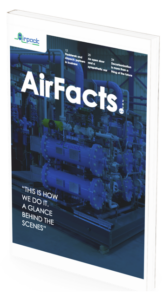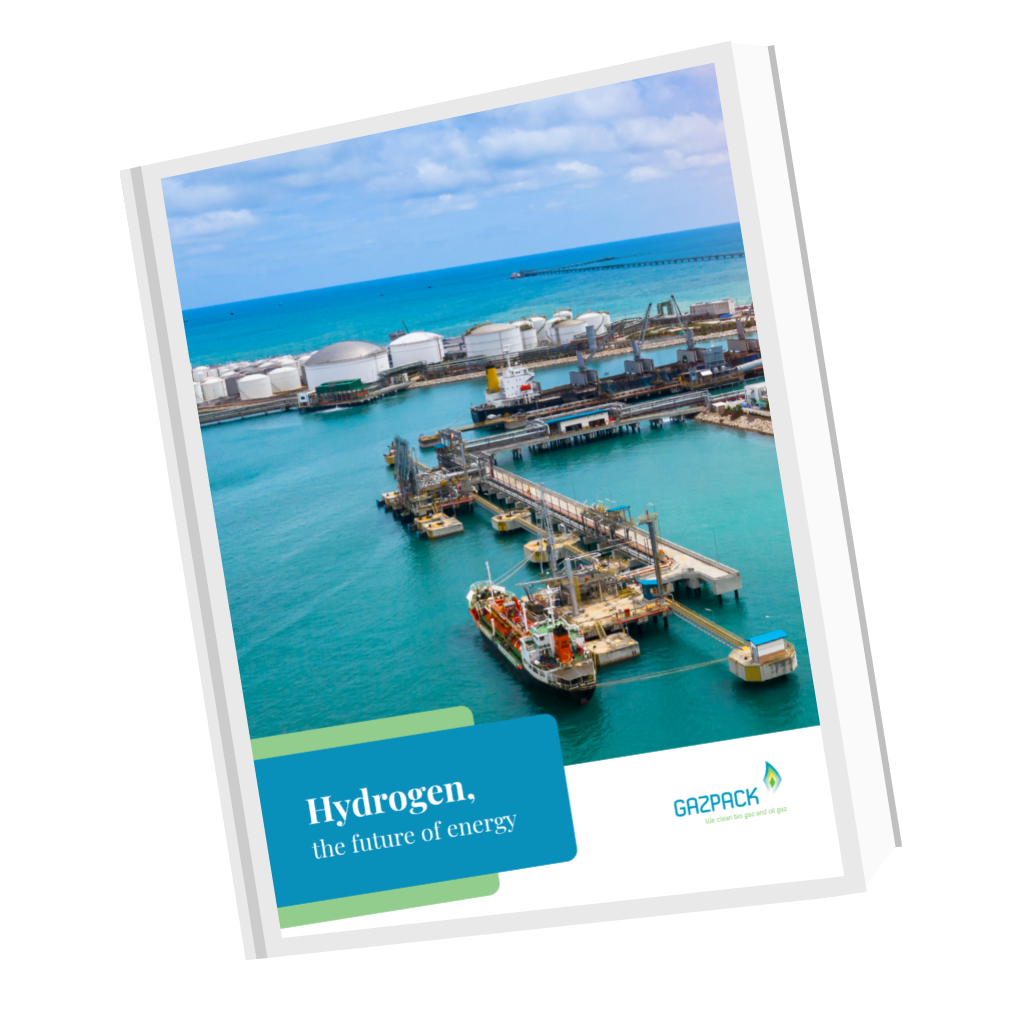Biogas Conversion / Biogas Converter
Looking to explore the world of biogas processing and handling solutions? Get instant access to our documents about biogas technology.
According to the U.S. Environmental Protection Agency (EPA), the average automobile emits 4.6 metric tons of carbon dioxide (CO2) on an annual basis. Although that number can vary according to fuel economy and other factors, it gives pause to those concerned about atmospheric threats coming from greenhouse gases. Furthermore, this figure suggests that larger vehicles — trucks, buses e.g. — pump out an even greater volume of CO2. Such realities highlight the urgency of developing renewable fuels and energy sources that add no new greenhouse emissions to the earth’s atmosphere. Biogas is one such source that is also convertable to liquid form.
Where Do We Find Biogas?
In fact, biogas is not hard to locate. Decomposing vegetation and animal remains; biodegradable garbage like banana peels, apple cores, egg shells and fat trimmings; manure from farm animals and droppings from wildlife; and sewage and wastewater all serve as potential biogas points of origination. The key is that their decomposition take place free of oxygen. Biogas creation is anaerobic so, in the natural world, it occurs when this organic matter is buried. Modern technologies, however, have made possible the anaerobic digestion of such materials as a result of human engineering.
Whether in a designed apparatus or in an outdoor biome, anaerobic digestion proceeds in a consistent fashion. Once deprived of oxygen, the organic materials, or substrate, are subject to breakdown by specific bacterial organisms. First, the microbes make the organisms water soluble and split the chemical bonds within them. Then, the substrate components are transformed through chemical reactions to volatile acids. These acids are finally converted to biogas consisting of CO2 and methane (CH4). The methane is the productive compound that biogas offers. Therefore, the gas must be collected and purified of all accompanying contaminants.
How Is Biogas Cleaned?
In addition to CH4 and CO2, biogas contains smaller quantities of hydrogen sulfide, water vapor and other compounds that are either dangerously toxic to public health and energy infrastructure or detrimental to the efficiency and performance of the methane itself. Before the biogas is suitable for use, these contaminants must be removed. Some of them absorbed through contact with chemical solutions; others are adsorbed by means of contact with solids like activated carbon. Sometimes membranes are employed to filter out the unwanted compounds. Whatever the technique, the methane must reach a degree of purity before it is usable.
Into What Is Biogas Converted?
Biogas conversion can potentially work for any number of fuels as its end-product. The cleaned and purified methane can be used for ethanol, diesel, methanol, gasoline or liquified petroleum gas (LPG). Each of these fuels has its own applications yet — when the source is biogas — the carbon effect on the gases surrounding the earth is far improved. Methanol, for example, can theoretically result from biomethane after the application of methanotrophic bacteria. Another way is to first chemically alter the biogas into synthesis gas, followed by the reformation of the syn-gas into methanol.
More precisely, however, biogas conversion is using biomethane in place of these transportation fuels through the modification of engines. A single-cylinder four-stroke gasoline engine, for example, can be re-fitted for biogas through a fairly simple operation. Decontamination and purification are mandatory. Beyond that necessity, the biogas needs to be compressed with pressure amounting to nearly 700 pounds per square inch and cooled to 126 degrees below zero on a Fahrenheit scale. Once the biogas is suitable, the engine carburetor is the only major engine component that needs to be replaced or, at least, significantly renovated. The result is a gasoline engine adaptable to biogas.
How about liquid petroleum gas (LPG)? LPG is actually a derivative of geological natural gas when it is combined with refined crude oil. It is favored for several reasons: ease of transport; energy density; combustion efficiency; and heat transfer efficiency. By in large, LPG is used primarily at the household level, i.e. cooking and heating, but is also increasingly employed by the industry. LPG also possesses ecological advantages in that it emits lower levels of nitrous oxide, sulfur oxide and particulates. This poses a question: can biogas substitute for LPG and maintain all of the benefits?
Biogas to LPG conversion is a timely topic since scientists are forecasting an eventual depletion of liquid petroleum. Many believe that natural gas and — by extension — biogas serve as the solution to this coming void in liquid fuels. Ultimately, the biogas converter or, more accurately, intermediate state, is considered by researchers to be the syn-gas noted in the above reference to methanol. Converting biogas to synthesis gas is followed by converting syn-gas to liquid fuel. Many believe the LPG supply problem is not yet sufficiently acute to invest in the required conversion technology on a larger scale.
In Summary
Converting biogas has a double meaning. It can refer to transforming biogas into a liquid fuel or — just as often — adjusting liquid fuel combustion engines to accommodate biogas. In either scenario, the unlimited supply of organic material that serves as substrate makes biogas a practical option. Environmental considerations make it an attractive one. Given the realities of climate change and fuel depletions, biogas may also be a very necessary alternative.




